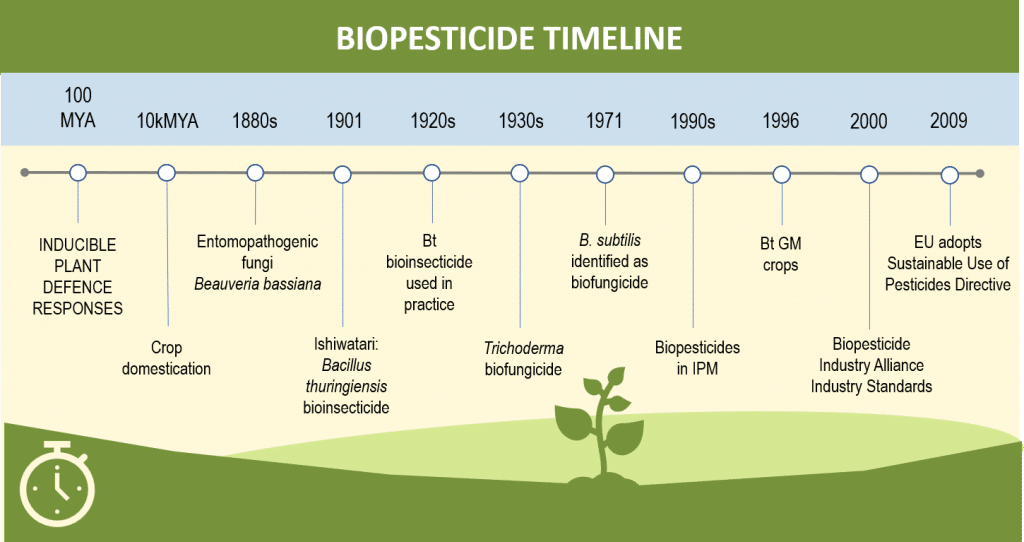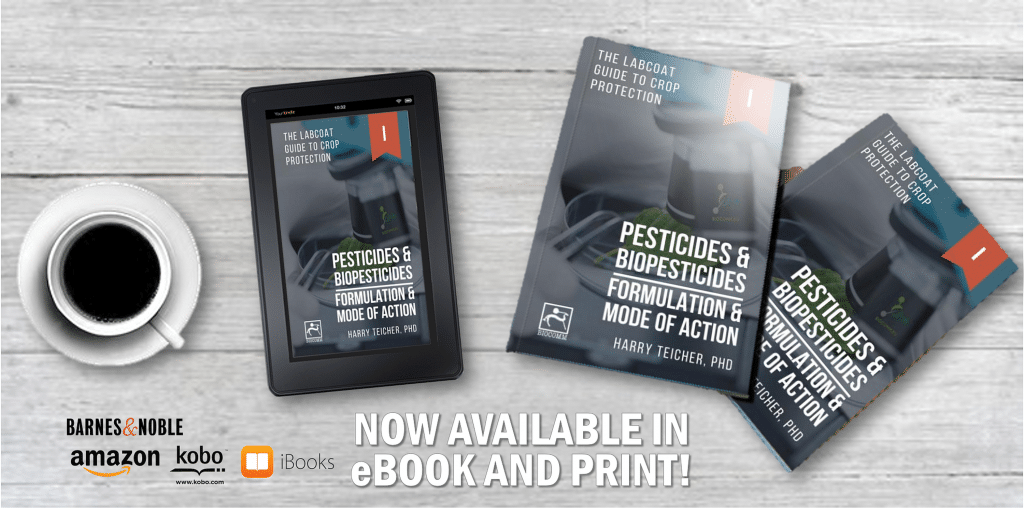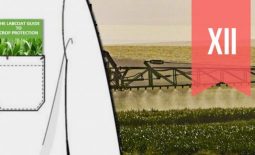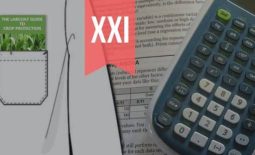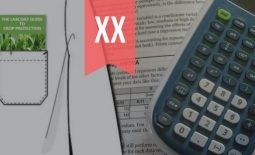BioPesticides, PART V: a (surprisingly long) Biopesticide Timeline
In this fifth article of a series on BioPesticides, I present a timeline for the (surprisingly early) use of biopesticides in crop protection, and introduce a few examples.
The application of biopesticides in plant protection is certainly not a new innovation – a few examples are presented in the following:
Crop pests and diseases, as well as the activity of beneficial insects have been known since the beginning of agriculture, some 10K years ago.
In 1835, Agostino Maria Bassi identified the ascomycetes fugus Beauveria bassiana as a disease of silkworm. By the turn of the nineteenth century, scientists were reporting on the biology and pathology of entomopathogenic fungi.
In 1901 a bacterial pathogen of silkworms was discovered, subsequently named Bacillus thuringiensis (Bt). Field trials with Bt to control the European corn borer were conducted in the late 1920s, and in 1938 the first commercial Bt preparation was introduced.
Today, entomopathogenic bacteria are widely used to control insect pests, typically via their digestive tracts, while Bt-toxin crystals are the basis of microbial-derived bioinescticides which are activated upon ingestion by lepidopteran insect pests, leading to cell disintegration and insect death.
In the 1930s, several species of the soil-borne Ascomycetes fungus Trichoderma began to be used as biocontrol agents against fungal diseases of plants, through the mechanisms of antibiosis, parasitism, plant-defence induction, and competition.
In 1971, the endospore-forming bacterium Bacillus subtilis was identified as a biofungicide able to supress seed and seedling disease.
Bacillus strains such as B. subtilis, B. amyloliquefaciens and B. licheniformisproduce antimicrobial metabolites such as lipopeptides, which exhibit a broad antimicrobial spectrum and surfactant activity.
Today, B. subtilis and its variants are among the most-used biofungicides to control soil and seed-borne pathogens, as well as foliar plant diseases.
With the increased focus on Integrated Pest Management (IPM) in the 1990s, interest in genetic modification (GM) and biopesticide development grew, and in 1996 the first insect-resistant Bt GM crops were introduced. Bacillus thuringiensis functions as an insecticide when its toxin (Bt toxin) is directly incorporated into plants through the use of genetic engineering.
The increased public awareness of the benefits of Integrated Pest Management strategies, which combine the use of biopesticides with natural predators, pest-resistant varieties, cultivation techniques and conventional crop protection chemistries is a key factor driving the growth of the biopesticide market.
Reflecting the increased contribution of biological strategies in crop protection, the Biopesticide Industry Alliance (changed to Biological Products Industry Alliance in 2017) was initiated in 2000 to ensure Industry Standards and increase awareness of biopesticides and biologicals in agriculture.
In 2009, the EU adopted the Sustainable Use of Pesticides Directive (2009/128/EC) promoting the implementation of biopesticide-based integrated pest management solutions.
In other articles in this series, I focus on Bridging the Interface between Biological and Conventional crop protection, define Agricultural Biologicals terminology, analyse their current viability and discuss drivers of BioPesticide efficacy.
***
Thanks for reading – if you liked what you read, please consider liking and sharing. Your feedback is invaluable, and helps new readers discover my work!
Please feel free to read and share my other articles in this series!
PESTICIDES & BIOPESTICIDES: FORMULATION & MODE OF ACTION – the first book in the LABCOAT GUIDE TO CROP PROTECTION series is now published and available in eBook and Print formats!
Aimed at students, professionals, and others wishing to understand basic biological aspects of Crop Protection, this book is an easily accessible introduction to essential principles of Pesticide and Biopesticide Mode Of Action and Formulation.
A little about myself
I am a Plant Scientist with a background in Molecular Plant Biology and Crop Protection.
20 years ago, I worked at Copenhagen University and the University of Adelaide on plant responses to biotic and abiotic stress in crops.
At that time, biology-based crop protection strategies had not taken off commercially, so I transitioned to conventional (chemical) crop protection R&D at Cheminova, later FMC.
During this period, public opinion as well as increasing regulatory requirements gradually closed the door of opportunity for conventional crop protection strategies, while the biological crop protection technology I had contributed to earlier began to reach commercial viability.
From January 2018, I will be available to provide independent Strategic R&D Management as well as Scientific Development and Regulatory support to AgChem & BioScience organizations developing science-based products.
For more information, visit BIOSCIENCE SOLUTIONS – Strategic R&D Management Consultancy
_

